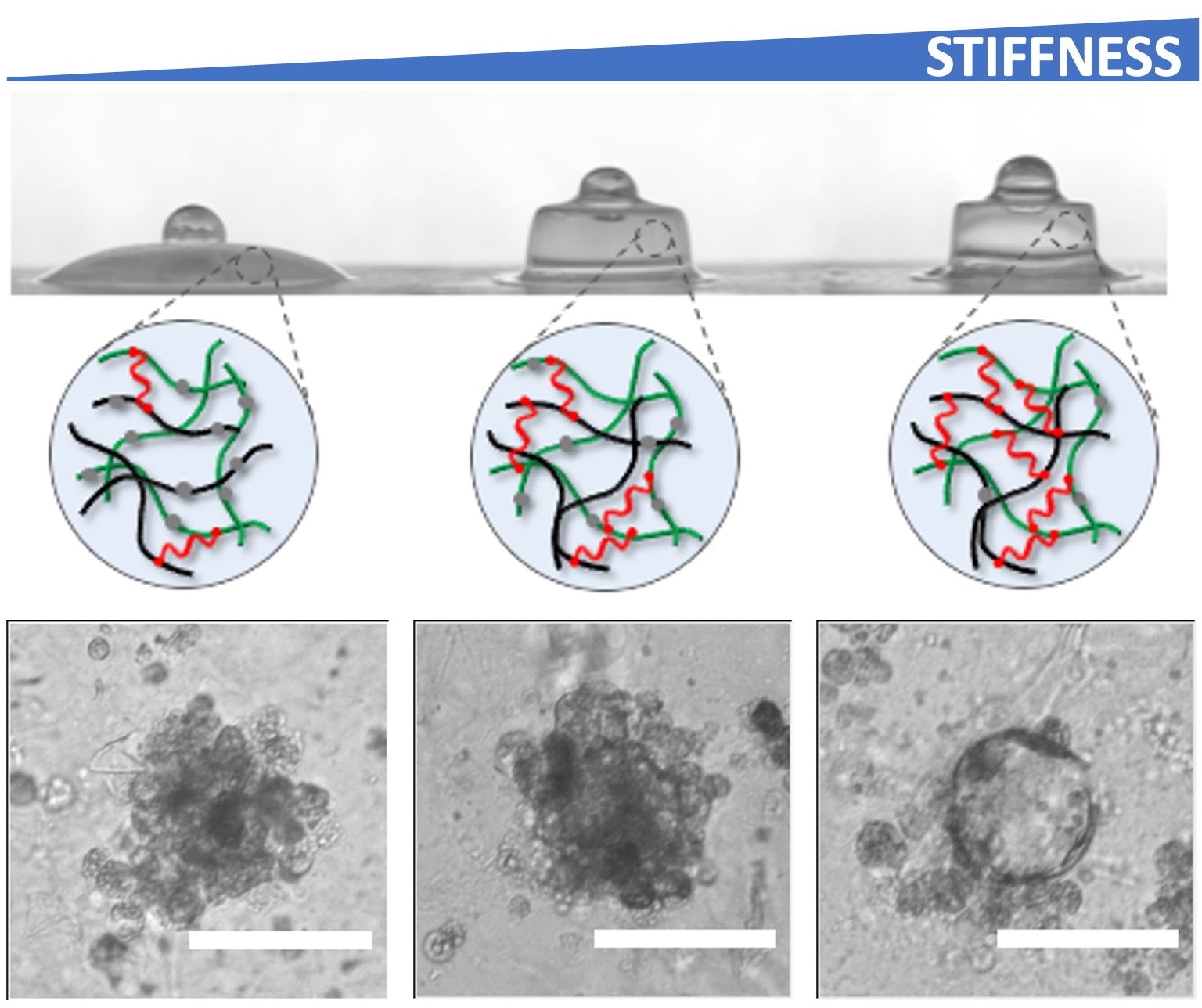
Pancreatic organoids: acinar-to-ductal metaplasia induced by fine tuning of stiffness in designed hyaluronic based hydrogels mimicking ECM

Breast tumor organoids growth within Matrigel, chemically modified cellulose and hyaluronic acid gel
Engineering the 3D cell microenvironment
Hydrogels are highly swellable 3D networks composed of hydrophilic crosslinked polymer chains, that are widely used as matrices for cell growth due to the similarity of their mechanical and diffusivity properties to the extracellular matrix. We develop hydrogels in standardized conditions for organoid culture in synthetic matrices alternative to Matrigel.
2D hydrogels for mechanobiology
Mechanical signals are pivotal ingredients in how cells perceive and respond to their microenvironments, and to synthetic biomaterials that mimic them. We develop 2D hydrogels substrates recapitulating the physical cues that natural extracellular matrices (ECM) deliver to cells. Cell mechanosignaling and nuclear shape are controlled by independently modulating substrate stiffness and adhesiveness, in static or dynamic conditions.
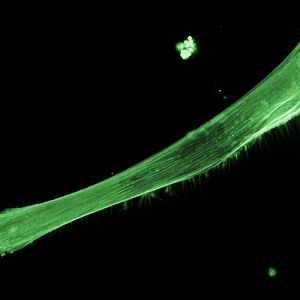
1 hour movie of cell cytoskeleton modification during substrate softening.

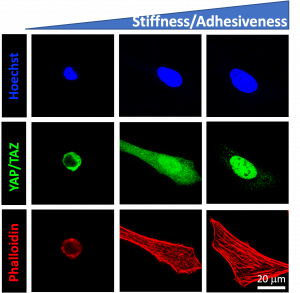

Nuclear cell’s shape on soft PEG hydrogels.
Immunofluorescence showing nuclei, activation state of YAP/TAZ and F-actin structure at different stiffnesses on designed PEG hydrogels.
Nuclear cell’s shape on stiff PEG hydrogels.
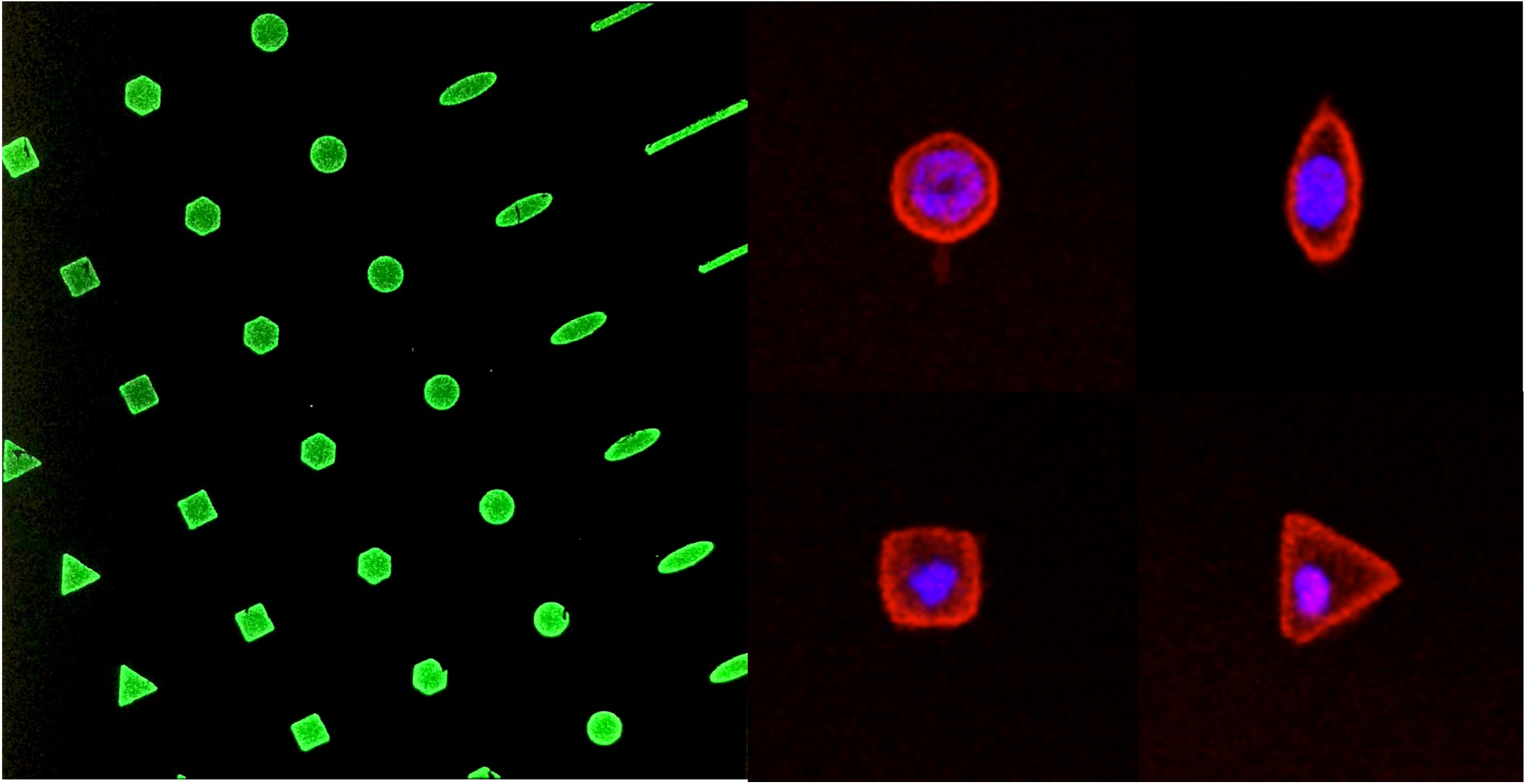
Microfabricated adhesive ‘islands’ coated with fluorescent fibronectin. Single cell (Human Epidermal Keratinocytes) seeded and shaped by the adhesive area
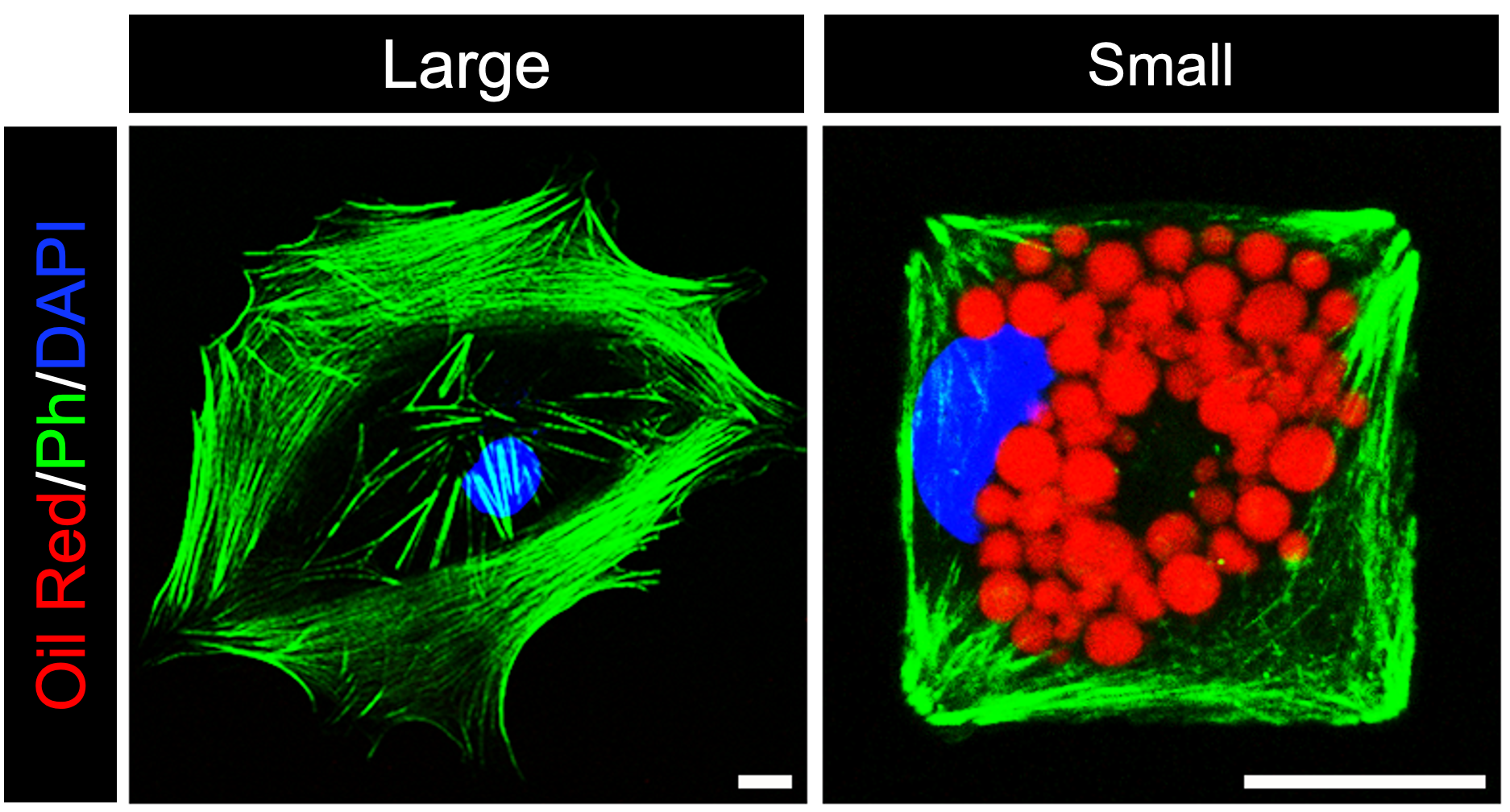
Cell spreading on big adhesive areas increases YAP/TAZ nuclear accumulation, whereas confinement leads to YAP/TAZ turn off. MSCs forced to small pattern (right) differentiate into adipocytes.
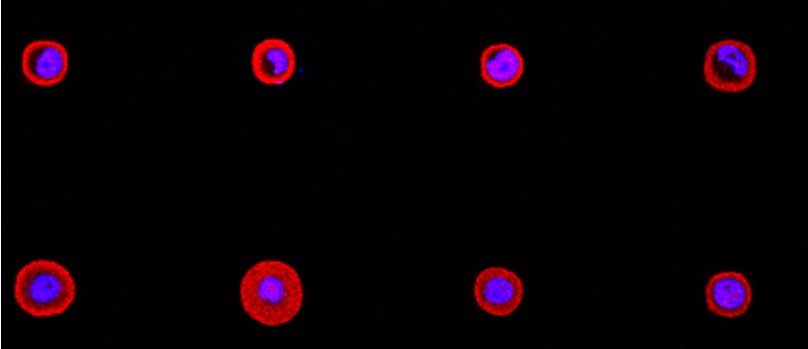
Single cell (Human Epidermal Keratinocytes) seeded on small round adhesive islands
Engineering cell size
Micropatterned adhesive ‘islands’ coated with ECM molecules allow restriction of the adhesive area and shape to which individual cells can attach in two dimensions, offering the opportunity to study the relation between cell shape and function. On small islands, cell spreading is reduced, narrowing the distance between focal adhesions, as such inducing a more relaxed cytoskeletal state typified by thicker cortical actin and reduced stress fibres.
3D microfabrication
Functional materials are engineered for 3D fabrication of complex structures at the micro, meso and macroscale, by two photon lithography or stereolithography. The interest is common to the scientific community, medical applications and to the industry, for the perspective applications to functional biomimetic interfaces, miniaturized devices, and 3D prototypes.
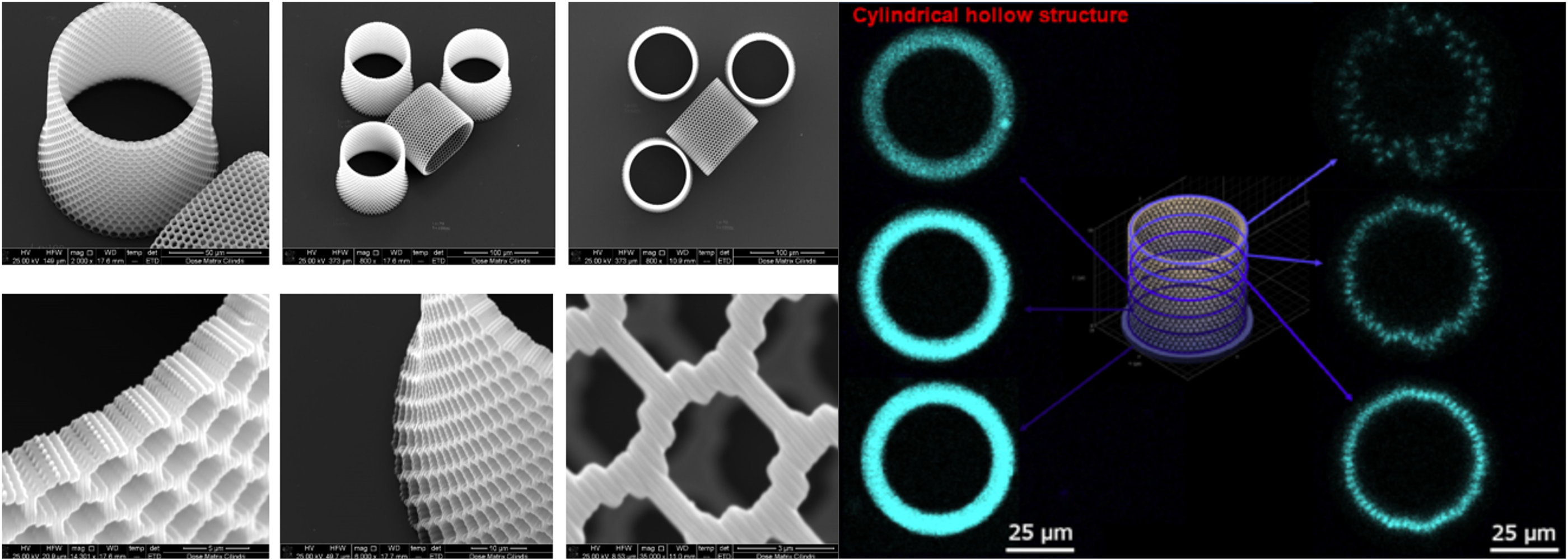
Microfabricated adhesive ‘islands’ coated with fluorescent fibronectin. Single cell (Human Epidermal Keratinocytes) seeded and shaped by the adhesive area
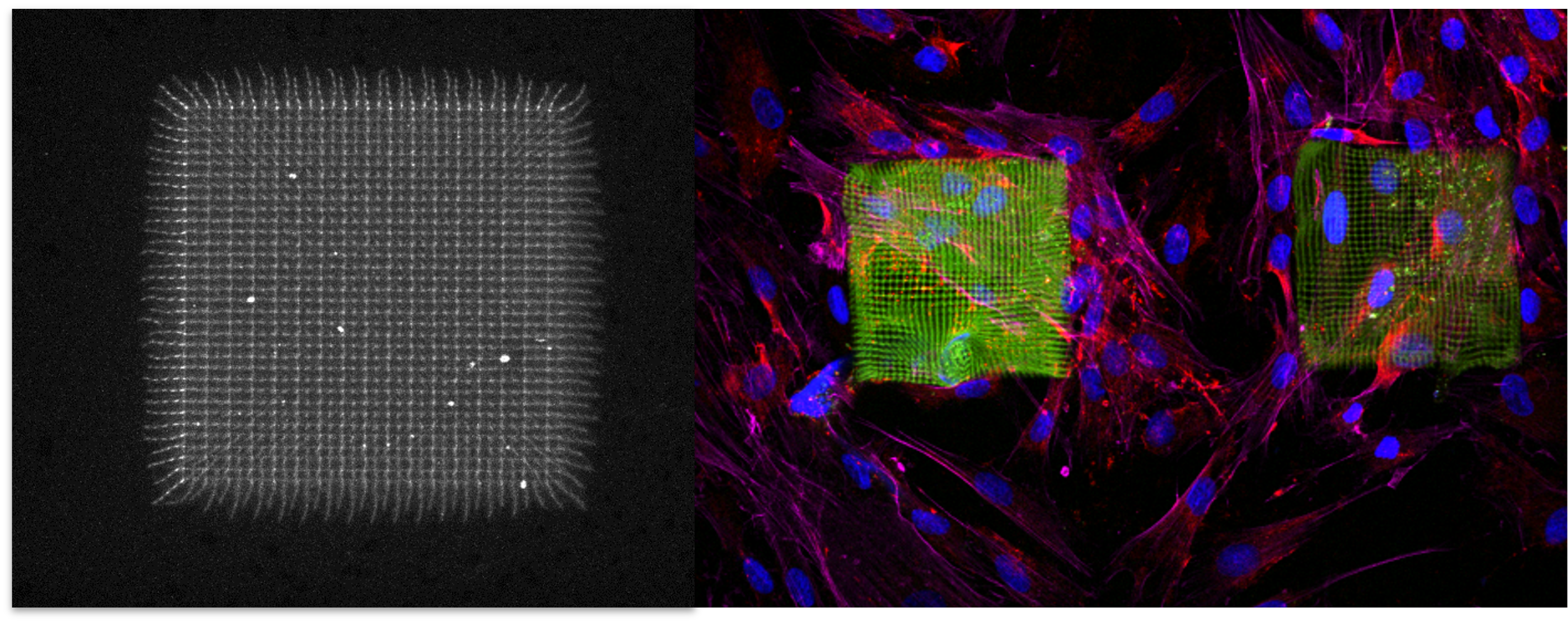
Cell spreading on big adhesive areas increases YAP/TAZ nuclear accumulation, whereas confinement leads to YAP/TAZ turn off. MSCs forced to small pattern (right) differentiate into adipocytes.
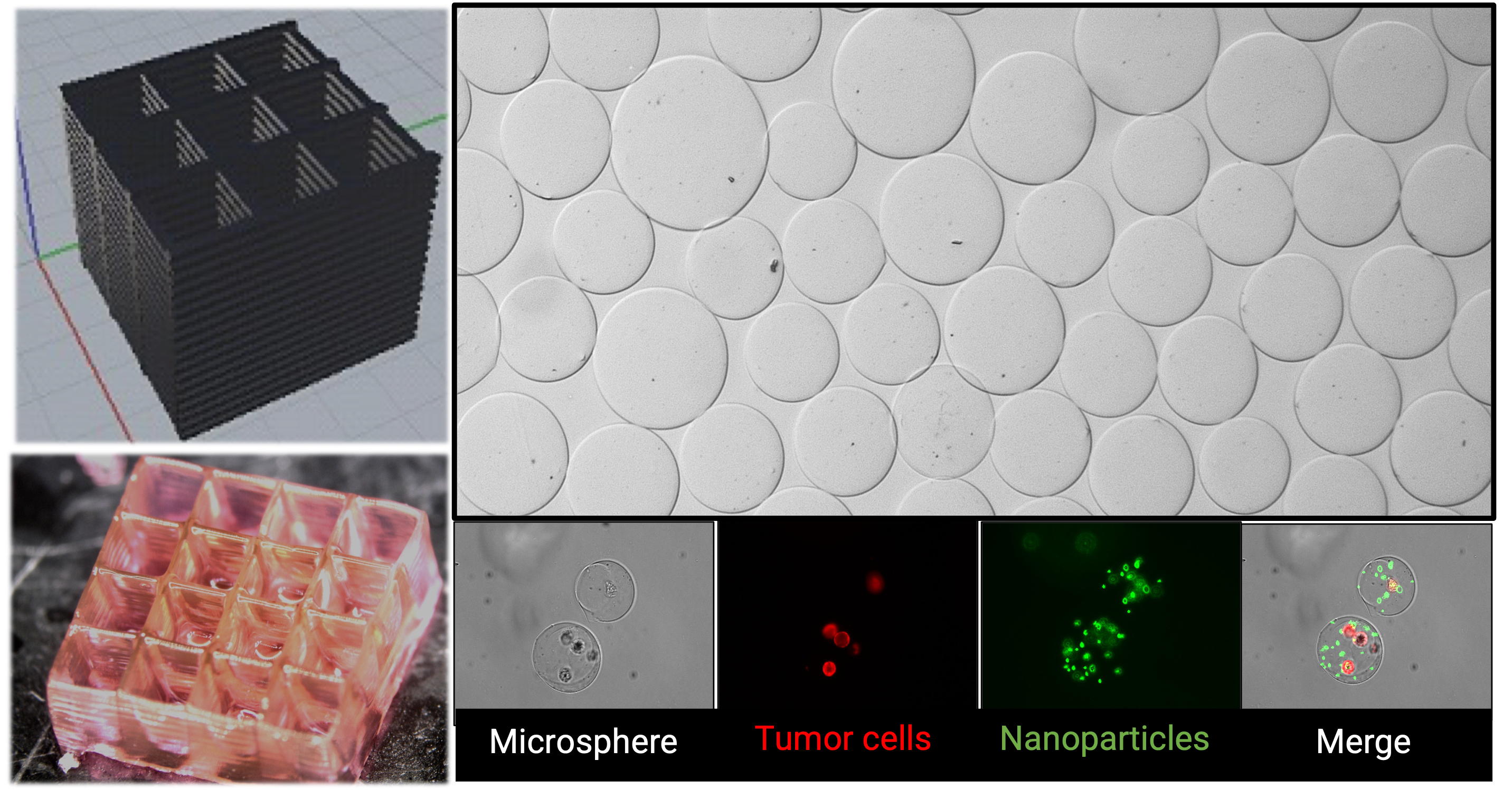
Single cell (Human Epidermal Keratinocytes) seeded on small round adhesive islands
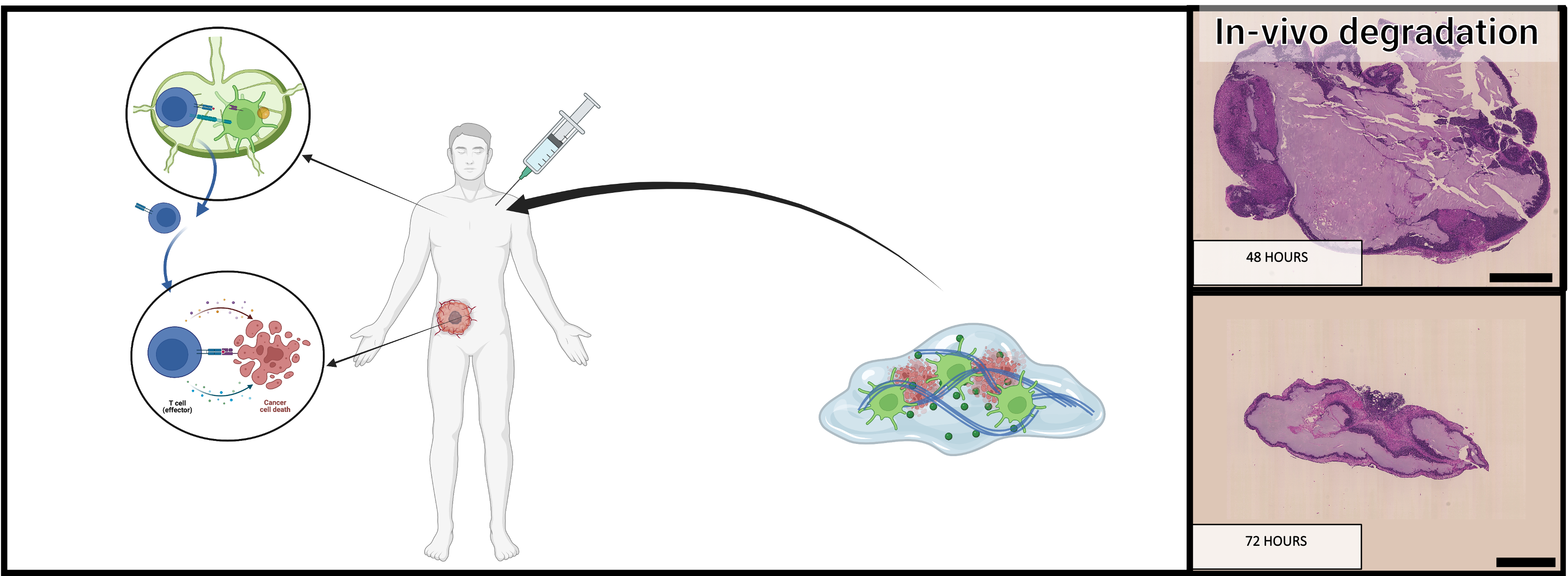
Composite soft hydrogel is injected in-vivo to instruct immune system, for example against disease (left), releasing immunostimulatory cues with a controlled in-vivo degradation (right)

Optimized biomaterial properties for efficient immunostimulation: injectability (left), controlled release of cytokines (center) and recruitment of endogenous immune cells (right).
Injectable hydrogels for the delivery of cell-based immunotherapies
A transformative tumor vaccination strategy using is developed immunoengineering hydrogel niches combining inactivated tumor cells as multiple antigen source and immunostimulatory cues co-delivered in nanocarriers, to orchestrate in-vivo a immune cells activation.
